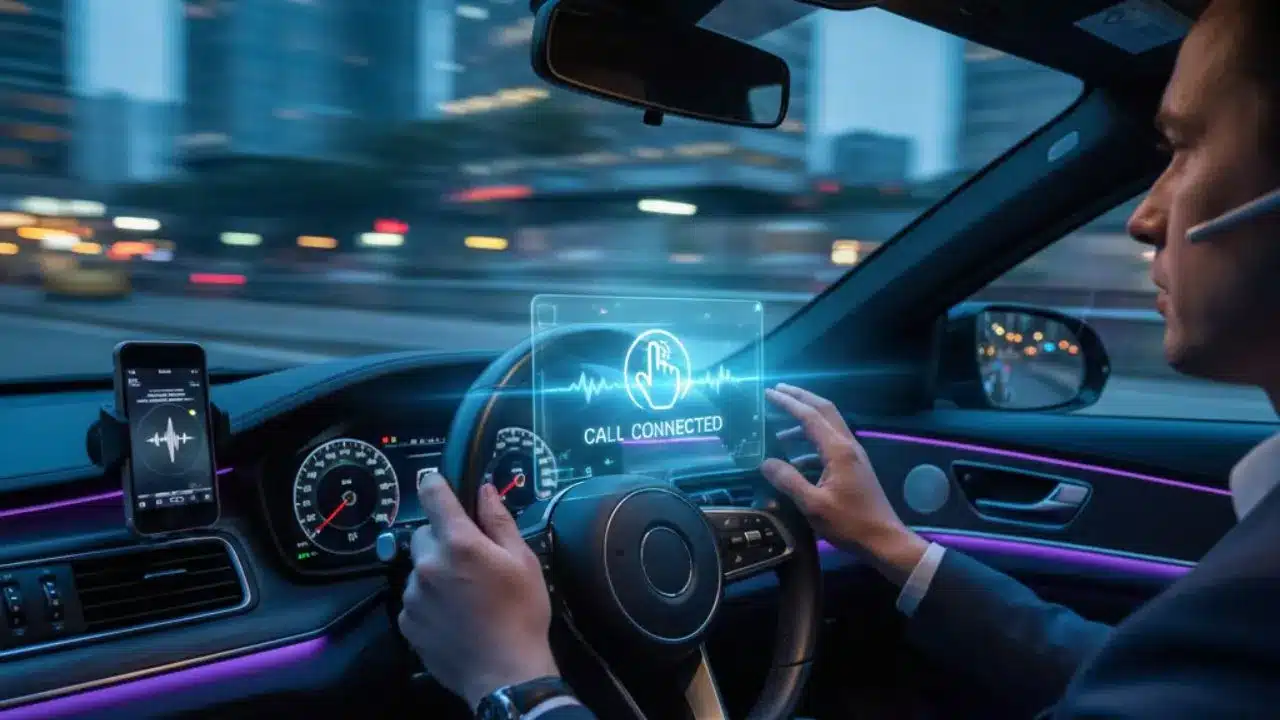Hands-free calling is very important when driving. It keeps you safe by allowing you to talk without holding the phone. Many smartphones offer reliable hands-free calling features. But which phones work best with cars? This article explains which smartphones have the most reliable hands-free calling in cars, focusing on Bluetooth connectivity, call clarity, and ease of use.
What Is Hands-Free Calling?
Hands-free calling means making or receiving phone calls without holding your phone. You can use voice commands or car stereo systems for this. It helps drivers keep their eyes on the road and hands on the wheel. Most modern cars support wireless connections like Bluetooth and apps like Apple CarPlay or Android Auto. Your phone connects to the car’s system, so you can answer calls by pressing a button or using your voice.
Why Is Hands-Free Calling Important in Cars?
Using a phone while driving can be dangerous. Many countries have laws that forbid holding a phone. Hands-free calling is legal and safer because it reduces distractions. Good hands-free calling means clear sound and easy controls. It allows drivers to stay connected without risking accidents.
Key Features of Reliable Hands-Free Calling
When choosing a smartphone for hands-free calling in cars, consider these key features:
- Bluetooth Connectivity: A strong and stable Bluetooth connection is essential.
- Compatibility: The phone should work well with Apple CarPlay or Android Auto.
- Call Quality: Noise-cancelling microphones and clear audio improve call clarity.
- Voice Commands: Support for voice assistants like Siri, Google Assistant, or Bixby allows hands-free use.
- User Interface: Simple and quick controls on phones and car systems reduce distractions.
Top Smartphones for Hands-Free Calling in Cars (2025)
1. Samsung Galaxy S25 Series
The Samsung Galaxy S25 series is one of the best for hands-free calling in cars. It uses advanced Bluetooth 5.3 technology for strong connections. The phones support Android Auto and Samsung’s Car Mode, making it easy to connect to most car stereos. Samsung includes noise-cancelling microphones and smart voice recognition. These features make calls clear even on busy roads. The Galaxy S25 Ultra is highly rated for its call clarity and smooth Bluetooth pairing.
2. Apple iPhone 16 Series
The iPhone 16 series continues to lead in car connectivity. With built-in support for Apple CarPlay, iPhones connect seamlessly to most car infotainment systems. The voice assistant Siri can answer or make calls using voice commands without needing to touch the phone. The phones have excellent microphones that reduce road noise. Users report very clear call quality while driving. The iPhone 16 Pro Max is especially noted for reliable Bluetooth performance with car systems.
3. Google Pixel 9 and 10 Series
Google Pixel phones offer native support for Android Auto, which integrates well with car systems. The Pixel 9 and 10 series have clear voice recognition and good noise cancellation during calls. Google Assistant works perfectly for hands-free calling, allowing voice dialing and call answering. Bluetooth LE Audio support in these models leads to better battery usage and stronger connections. They are easy to set up and use with most cars.
4. OnePlus 13 and 12
OnePlus phones like the OnePlus 13 provide reliable Bluetooth connections with car stereos. They support Android Auto and have AI-powered noise reduction for clear voices on calls. OnePlus phones also have fast pairing and respond quickly to voice commands. Many drivers praise these phones for minimal call drops and good microphone quality when connected to cars.
5. Sony Xperia 1 IV and Later Models
Sony Xperia phones are known for their excellent sound quality. The Xperia 1 IV and newer models have multi-directional antennas that help keep strong signals. They feature dual microphones with background noise cancellation. Sony’s technology ensures call clarity even in noisy environments like a moving car. These phones pair smoothly with car Bluetooth systems and maintain stable connections.
How Smartphones Connect to Car Systems for Hands-Free Calling
Most smartphones use Bluetooth technology to connect to a car’s audio system. Some newer phones also support wireless Apple CarPlay or Android Auto, which provide additional features like call control and voice commands directly from the car’s big screen. Connecting usually involves pairing the phone with the car’s Bluetooth or linking via a USB cable.
Tips to Improve Hands-Free Calling Experience in Cars
- Always update your phone’s software and your car’s firmware to the latest version.
- Use recognized apps like Apple CarPlay or Android Auto for better integration.
- Ensure your car stereo supports Bluetooth versions compatible with your smartphone.
- Clear your phone’s Bluetooth cache if connections are unstable.
- Position your phone properly to avoid signal drops.
What About Other Phones?
Phones like Motorola Razr 2025, Samsung Galaxy Z Flip 7, and Vivo X80 Pro 5G also support strong hands-free calling features. They have advanced Bluetooth versions, noise-cancelling microphones, and good voice assistant support. However, their car connectivity may depend on specific car stereo compatibility.
Final Thoughts
As of September 21, 2025, the most reliable smartphones for hands-free calling in cars are those that support strong Bluetooth connections, have noise-cancelling microphones, and integrate well with car systems like Apple CarPlay and Android Auto. Samsung Galaxy S25 series, Apple iPhone 16 series, and Google Pixel 9 and 10 series are among the top choices. These phones offer clear call quality, ease of use, and safety for drivers.
Choosing a reliable phone for hands-free calling can make a big difference to driving safety and comfort. Always ensure your phone and car systems are compatible and updated for the best experience.
Also Read-
What Are the Top Vehicles Supporting Seamless Voice Assistant Connectivity?
Where can I find cars with the latest wireless charging features for phones?
Which smartphones offer the longest battery life for use in cars?

